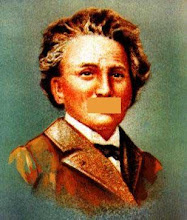Most beginning drivers can't. It takes training and practice. Sometimes I wake up in the morning and stick my head out of the sleeper and look at all of the trucks parked all around me. How in the world do they get them big trucks into those small places without smacking into one another?
Any idea how to back a truck
What is the best way to begin
How do you set up your truck to get it in the slot
When you first start backing a truck you have to make sure that you know what is behind you. G.O.A.L is an acronym used by many companies. Get Out and Look! It doesn't get any easier than that. Clean your windows and mirrors. Next and what I feel is the most important is to take it real slow. You can't worry about the impatient driver behind you because in the long run if you make a mistake it is going to take you longer anyway.
When you are first learning to back the truck just go up and back in the straightest line that you can. You'll discover that when backing that even a slight movement of the steering wheel will make a big change in the direction of the trailer. Just go back and forth until you get a feel of how the trailer reacts to your steering. Get a feel for how heavy the clutch feels. In tight spots your leg me become shaky when you have to use the clutch too much. A little secret that some drivers swear is bad and even more mechanics will frown upon and that is once you have mastered your shifting you can change gears both up shifting and down shifting without using the clutch.
Back to backing in. You're going back and forth and now it is time to learn how to put your trailer to a door or in a slot in a truck stop. If at all possible ALWAYS back to the driver's side of the truck. Blindside backing which is backing to the side where you can't see is too difficult and not for beginners. Go out of your way to avoid blindside backing. You can do that when there are no alternatives or you have become proficient at backing.
Set up you truck by pulling in front of the slot where you intend to back into. Continue to drive in front of the hole and pull out at about 45 degrees and continue until the trailer has completely passed the spot, but not by too much. Slowly start to back into the hole, watch the front of your trailer tandems, and line them up to a spot that you pick out. Steer back and forth to try and get the trailer to hit that spot. Never be afraid to get out and look to make sure the trailer is doing what you want it to do. Once you see that you are going to make it in to the slot then if necessary pull forward. Don't over compensate because you can take yourself out of good alignment.
After pulling up, try to get the rig as straight as possible so all you have to do is go straight back. Hopefully you had remembered to open your doors before you get in the spot. Actually I forgot to mention it so I put the blame on the reader. Open the trailer doors before you back and that will save you from walking into the customer to get loaded or unloaded and then having to go back outside to do it again.
